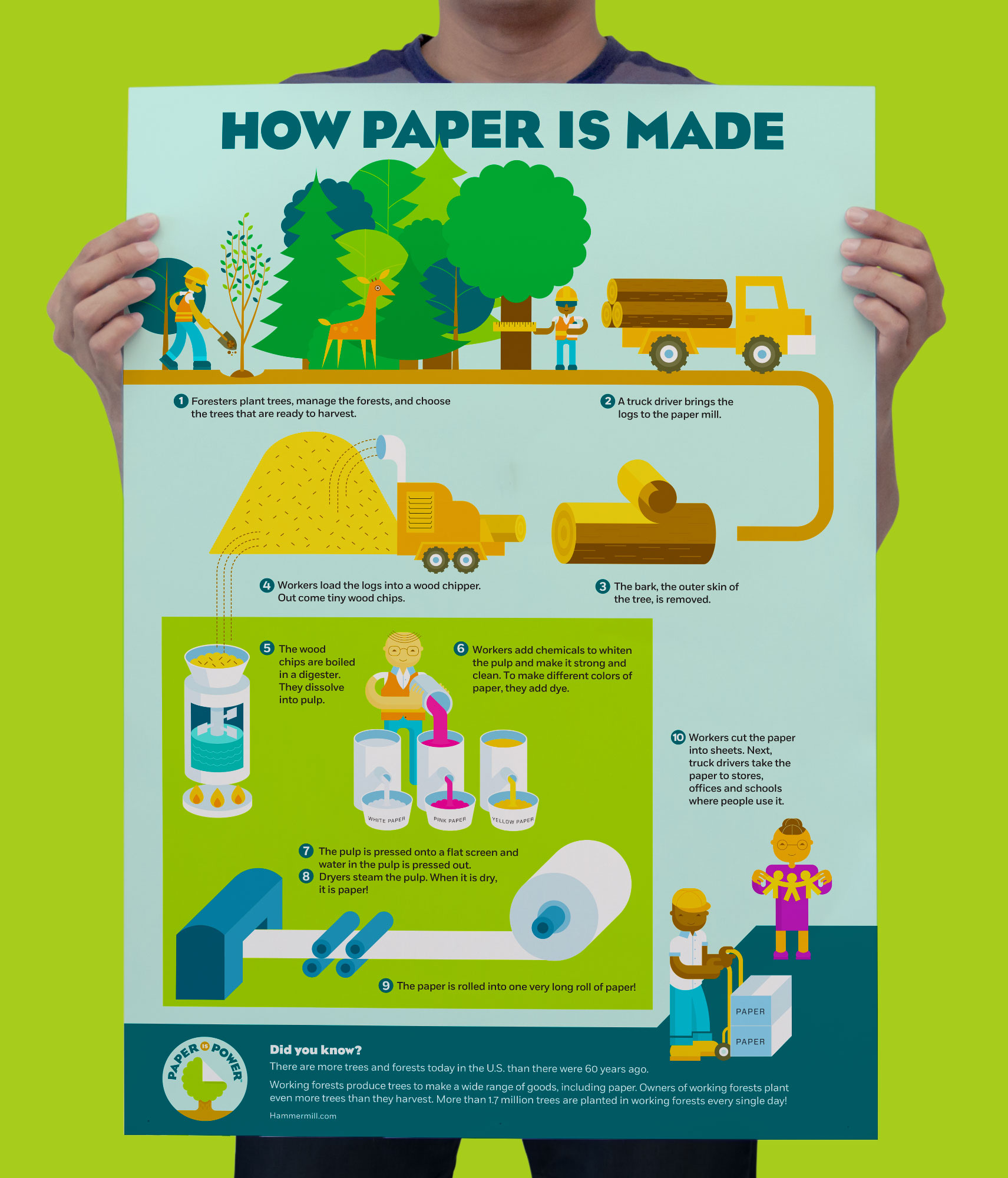Hammermill Elementary School
Supporting Teachers and Students
- Industrial
- Brand Experience
- Content Strategy
- Design
- Marketing Campaigns
- Strategy
Challenge
Many elementary school children think the use of paper is destroying forests; however, research shows that sustainable forestry is preserving and protecting woodlands for kids and future generations. Hammermill wanted to begin changing this perception, starting with kindergarten- through fifth-graders.
Solution
We developed an activity toolkit that teaches how sustainable forests work and how paper is made. Since research shows that young children retain information better when they engage with activities and learning material on paper (rather than on a computer screen or tablet), we naturally leveraged paper as both the message and the medium.
Result
Our program adheres to the Common Core standards, so teachers may use it to reinforce Science, Technology, Engineering and Mathematical concepts. Early testing with small groups of teachers showed their enthusiastic embrace of the materials.

Forests sustain so much life, providing wildlife habitat, supporting soil and water conservation, and helping clean the air—in addition to producing wood products for use in building and manufacturing. Many of the forests in North America are relatively new; designed to produce trees responsibly for harvest, these farms have been established in the past 75 years. Today, there are many more trees here than there were 500 years ago, before any cities were built. Hammermill and its parent, International Paper, have a longtime commitment to responsible forest stewardship.
Hammermill and its parent, International Paper, have a longtime commitment to responsible forest stewardship.
Public perception that using paper and wood products destroys forests continues, however. Hammermill sought our help to change that perception. Recognizing that young children think harvesting trees is bad for the environment, we recommended reaching out to elementary school-aged kids with an educational program that teaches about sustainable forestry and papermaking.

We proposed an activity book and supporting materials that would marry with Common Core educational standards teach students to form conclusions by thinking through evidence. Education experts say there’s strong demand for hands-on activities that teachers can weave into existing curriculum. So we developed a multi-part program called “Paper is Power,” creating the name, logo and supporting materials.

The Paper is Power kit centers around a coloring book that teaches about forests and paper; we worked with a veteran educator to develop copy and images. We also wrote, designed and photographed a series of paper-based activities, a classroom poster and a teacher’s guide for the program, along with a folder to hold all the materials. The six classroom projects, each of which can be completed in about 30 minutes, included making a folded book and making homemade paper.

Early results from the Paper is Power program showed that teachers were enthusiastic about the materials and the message. Hammermill offers the coloring book, activity guide and teacher handbook for free download from its consumer website, in addition to sharing it with educators. Teaching kids about science, the environment, sustainability and recycling helps create a new generation of planet-minded people.

Teaching kids about science, the environment, sustainability and recycling helps create a new generation of planet-minded people.

12K
Kits donated nationwide
1K
Kits were distributed to all children during corporate celebrations
Montana
Kit was adopted throughout all school districts in the state
